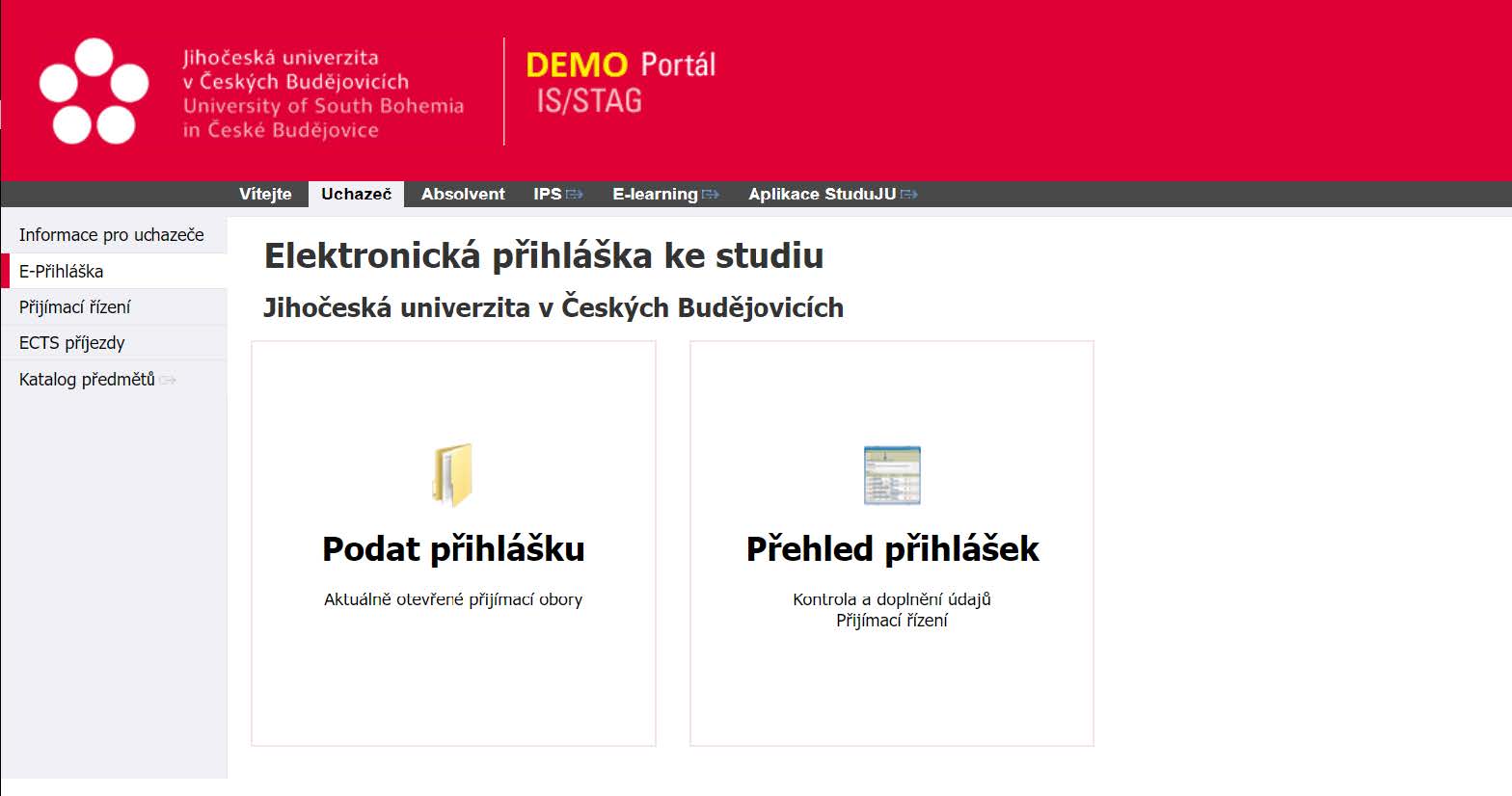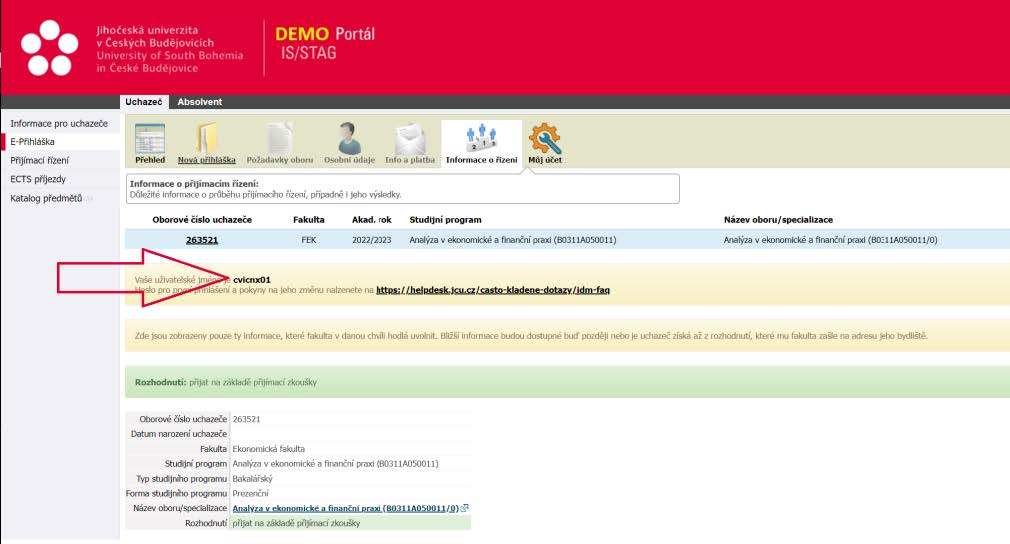List of peer reviewed publications from the joint RERI-uasb NMR center from the last 10 years
[1] P. Strasser, O. Plavcan, E. Ajvazi, H. Henke, O. Bruggemann, I. Teasdale, Hetero and homo alpha,omega-chain-end functionalized polyphosphazenes, Journal of Polymer Science, (2022).
[2] J.P. Quinones, C. Roschger, A. Iturmendi, H. Henke, A. Zierer, C. Peniche-Covas, O. Brueggemann, Polyphosphazene-Based Nanocarriers for the Release of Camptothecin and Epirubicin, Pharmaceutics, 14 (2022).
[3] V. Haider, P. Zebrowski, J. Michalke, U. Monkowius, M. Waser, Enantioselective organocatalytic syntheses of alpha-selenated alpha- and beta-amino acid derivatives, Organic & Biomolecular Chemistry, 20 (2022) 824-830.
[4] A. Dorniak, M. Haas, O. Bruggemann, I. Teasdale, W. Schofberger, Mechanochemical synthesis of freebase and metal corroles, Journal of Porphyrins and Phthalocyanines, 26 (2022) 84-89.
[5] D. Weinzierl, M. Waser, Chiral isothiourea-catalyzed kinetic resolution of 4-hydroxy 2.2 paracyclophane, Beilstein Journal of Organic Chemistry, 17 (2021) 800-804.
[6] D. Weinzierl, M. Waser, Synthesis of 2.2 Paracyclophane-Based Glycidic Amides Using Chiral Ammonium Ylides, Helvetica Chimica Acta, 104 (2021).
[7] P. Strasser, M. Russo, P. Stadler, P. Breiteneder, G. Redhammer, M. Himmelsbach, O. Bruggemann, U. Monkowius, P. Klan, I. Teasdale, Green-light photocleavable meso-methyl BODIPY building blocks for macromolecular chemistry, Polymer Chemistry, 12 (2021) 6927-6936.
[8] L. Stockhammer, J. Schorgenhumer, C. Mairhofer, M. Waser, Asymmetric alpha-Chlorination of beta-Keto Esters Using Hypervalent Iodine-Based Cl-Transfer Reagents in Combination with Cinchona Alkaloid Catalysts, European Journal of Organic Chemistry, 2021 (2021) 82-86.
[9] P. Rathner, M. Fahrner, L. Cerofolini, H. Grabmayr, F. Horvath, H. Krobath, A. Gupta, E. Ravera, M. Fragai, M. Bechmann, T. Renger, C. Luchinat, C. Romanin, N. Muller, Interhelical interactions within the STIM1 CC1 domain modulate CRAC channel activation, Nature Chemical Biology, 17 (2021) 196-204.
[10] A. Rathner, P. Rathner, A. Friedrich, M. Wiessner, C.M. Kitzler, J. Schernthaner, T. Karl, J. Krauss, F. Lottspeich, W. Mewes, H. Hintner, J.W. Bauer, M. Breitenbach, N. Muller, H. Breitenbach-Koller, J. von Hagen, Drug Development for Target Ribosomal Protein rpL35/uL29 for Repair of LAMB3R635X in Rare Skin Disease Epidermolysis Bullosa, Skin Pharmacology and Physiology, 34 (2021) 167-182.
[11] J.P. Quinones, C. Roschger, A. Zierer, C. Peniche-Covas, O. Bruggemann, Self-Assembled Silk Fibroin-Based Aggregates for Delivery of Camptothecin, Polymers, 13 (2021).
[12] C. Mairhofer, V. Haider, T. Bogl, M. Waser, Enantiospecific deoxyfluorination of cyclic alpha-OH-beta-ketoesters, Organic & Biomolecular Chemistry, 19 (2021) 162-165.
[13] L. Hejduk, P. Rathner, M. Strnad, L. Grubhoffer, J. Sterba, R.O.M. Rego, N. Muller, A. Rathner, Resonance assignment and secondary structure of DbpA protein from the European species, Borrelia afzelii, Biomolecular NMR Assignments, 15 (2021) 415-420.
[14] M. Haas, D. Krisch, S. Gonglach, M. Bechmann, M.C. Scharber, M. Ertl, U. Monkowius, W. Schofberger, Gallium(III) Corrole Complexes as Near-Infrared Emitter - Synthesis, Computational and Photophysical Study, European Journal of Organic Chemistry, 2021 (2021) 1525-1537.
[15] A. Gupta, C.M. Kitzler, P. Rathner, M. Fahrner, H. Grabmayr, A. Rathner, C. Romanin, N. Muller, Resonance assignment of coiled-coil 3 (CC3) domain of human STIM1, Biomolecular NMR Assignments, 15 (2021) 433-439.
[16] P. Grundlinger, C.C. Mardare, T. Wagner, U. Monkowius, A trigonal coordination of Au(I) phosphane complexes stabilized by O-(HX)-X-center dot center dot center dot (X = Cl-, Br-, I-) interactions, Monatshefte Fur Chemie, 152 (2021) 1201-1207.
[17] C. Fiedler, C. Ulbricht, T. Truglas, D. Wielend, M. Bednorz, H. Groiss, O. Bruggemann, I. Teasdale, Y. Salinas, Reversible Speed Regulation of Self-Propelled Janus Micromotors via Thermoresponsive Bottle-Brush Polymers, Chemistry-a European Journal, 27 (2021) 3262-3267.
[18] A. Eitzinger, J. Otevrel, V. Haider, A. Macchia, A. Massa, K. Faust, B. Spingler, A. Berkessel, M. Waser, Enantioselective Bifunctional Ammonium Salt-Catalyzed Syntheses of 3-CF3S-, 3-RS-, and 3-F-Substituted Isoindolinones, Advanced Synthesis & Catalysis, 363 (2021) 1955-1962.
[19] D. Cristurean, S. Schaumuller, P. Strasser, S. Haudum, M. Himmelsbach, M. Bechmann, O. Bruggemann, I. Teasdale, Diels-Alder cycloaddition polymerization of highly aromatic polyimides and their multiblock copolymers, Polymer Chemistry, 12 (2021) 3160-3168.
[20] M. Winter, R. Schutz, A. Eitzinger, A.R. Ofial, M. Waser, CF3-Containing para-Quinone Methides for Organic Synthesis, European Journal of Organic Chemistry, 2020 (2020) 3812-3817.
[21] J. Schorgenhumer, S. Otte, V. Haider, J. Novacek, M. Waser, A flexible strategy for the synthesis of bifunctional 6 '-(thio)-urea containing Cinchona alkaloid ammonium salts, Tetrahedron, 76 (2020).
[22] K.M. Saller, I. Gnatiuk, D. Holzinger, C. Schwarzinger, Semiquantitative Approach for Polyester Characterization Using Matrix-Assisted Laser Desorption Ionization/Time-of-Flight Mass Spectrometry Approved by H-1 NMR, Analytical Chemistry, 92 (2020) 15221-15228.
[23] Y. Salinas, M. Kneidinger, C. Fornaguera, S. Borros, O. Bruggemann, I. Teasdale, Dual stimuli-responsive polyphosphazene-based molecular gates for controlled drug delivery in lung cancer cells, Rsc Advances, 10 (2020) 27305-27314.
[24] Y. Salinas, O. Bruggemann, U. Monkowius, I. Teasdale, Visible Light Photocleavable Ruthenium-Based Molecular Gates to Reversibly Control Release from Mesoporous Silica Nanoparticles, Nanomaterials, 10 (2020).
[25] V. Haider, V. Kreuzer, M. Tiffner, B. Spingler, M. Waser, Ammonium Salt-Catalyzed Ring-Opening of Aryl-Aziridines with beta-Keto Esters, European Journal of Organic Chemistry, 2020 (2020) 5173-5177.
[26] M. Haas, S. Gonglach, W. Schofberger, Meso-alkynyl corroles and their cobalt(III), manganese(III) and gallium(III) complexes, Journal of Porphyrins and Phthalocyanines, 24 (2020) 737-749.
[27] A. Eitzinger, M. Winter, J. Schorgenhumer, M. Waser, Quaternary beta(2,2)-amino acid derivatives by asymmetric addition of isoxazolidin-5-ones to para-quinone methides, Chemical Communications, 56 (2020) 579-582.
[28] A. Eitzinger, R.J. Mayer, N. Hampel, P. Mayer, M. Waser, A.R. Ofial, Electrophilic Reactivities of Vinyl p-Quinone Methides, Organic Letters, 22 (2020) 2182-2186.
[29] A. Eitzinger, J.F. Briere, D. Cahard, M. Waser, Enantioselective catalytic synthesis of alpha-aryl-alpha-SCF3-beta(2,2)-amino acids, Organic & Biomolecular Chemistry, 18 (2020) 405-408.
[30] R.N. De, S. Gonglach, S. Paul, M. Haas, S.S. Sreejith, P. Gerschel, U.P. Apfel, T.H. Vuong, J. Rabeah, S. Roy, W. Schofberger, Electrocatalytic Reduction of CO2 to Acetic Acid by a Molecular Manganese Corrole Complex, Angewandte Chemie-International Edition, 59 (2020) 10527-10534.
[31] K. Zielke, O. Kovac, M. Winter, J. Pospisil, M. Waser, Enantioselective Catalytic 4+1 -Cyclization of ortho-Hydroxy-para-Quinone Methides with Allenoates, Chemistry-a European Journal, 25 (2019) 8163-8168.
[32] M. Winter, H. Kim, M. Waser, Pd-Catalyzed Allylation of Imines to Access alpha-CF3-Substituted alpha-Amino Acid Derivatives, European Journal of Organic Chemistry, 2019 (2019) 7122-7127.
[33] M. Winter, K. Faust, M. Himmelsbach, M. Waser, Synthesis of alpha-CF3-proline derivatives by means of a formal (3+2)-cyclisation between trifluoropyruvate imines and Michael acceptors, Organic & Biomolecular Chemistry, 17 (2019) 5731-5735.
[34] J. Schorgenhumer, M. Tiffner, M. Waser, (Thio)urea containing quaternary ammonium salts for the CO2-fixation with epoxides, Monatshefte Fur Chemie, 150 (2019) 789-794.
[35] J.P. Quinones, C. Roschger, A. Zierer, C. Peniche, O. Bruggemann, Steroid-grafted silk fibroin conjugates for drug and agrochemical delivery, European Polymer Journal, 119 (2019) 169-175.
[36] J.P. Quinones, A. Iturmendi, H. Henke, C. Roschger, A. Zierer, O. Bruggemann, Polyphosphazene-based nanocarriers for the release of agrochemicals and potential anticancer drugs, Journal of Materials Chemistry B, 7 (2019) 7783-7794.
[37] V. Poscher, I. Teasdale, Y. Salinas, Surfactant-Free Synthesis of Cyclomatrix and Linear Organosilica Phosphazene-Based Hybrid Nanoparticles, Acs Applied Nano Materials, 2 (2019) 655-+.
[38] E. Ponzini, A. Natalello, F. Usai, M. Bechmann, F. Peri, N. Muller, R. Grandori, Structural characterization of aerogels derived from enzymatically oxidized galactomannans of fenugreek, sesbania and guar gums, Carbohydrate Polymers, 207 (2019) 510-520.
[39] M. Kneidinger, A. Iturmendi, C. Ulbricht, T. Truglas, H. Groiss, I. Teasdale, Y. Salinas, Mesoporous Silica Micromotors with a Reversible Temperature Regulated On-Off Polyphosphazene Switch, Macromolecular Rapid Communications, 40 (2019).
[40] E. Hobbollahi, M. List, U. Monkowius, Poly(4-vinylpyridine) as ligand for Au(I) and Zn(II) cations: luminescent metal-containing polymers, Monatshefte Fur Chemie, 150 (2019) 877-883.
[41] B. Hailegnaw, V. Poscher, C. Ulbricht, H. Seelajaroen, I. Teasdale, Y. Salinas, N.S. Sariciftci, M.C. Scharber, Improving the Performance of Perovskite Solar Cells using a Polyphosphazene Interfacing Layer, Physica Status Solidi a-Applications and Materials Science, 216 (2019).
[42] P. Grundlinger, M. Gyorok, S. Wolfmayr, T. Breuer, D. Primetzhofer, B. Bruckner, U. Monkowius, T. Wagner, Aggregation of Au(i)-complexes on amorphous substrates governed by aurophilicity, Dalton Transactions, 48 (2019) 14712-14723.
[43] S. Gonglach, S. Paul, M. Haas, F. Pillwein, S.S. Sreejith, S. Barman, R. De, S. Mullegger, P. Gerschel, U.P. Apfel, H. Coskun, A. Aljabour, P. Stadler, W. Schofberger, S. Roy, Molecular cobalt corrole complex for the heterogeneous electrocatalytic reduction of carbon dioxide, Nature Communications, 10 (2019).
[44] M. Brauer, M.T. Zich, K. Onder, N. Muller, The influence of commonly used tags on structural propensities and internal dynamics of peptides, Monatshefte Fur Chemie, 150 (2019) 913-925.
[45] K. Zielke, M. Waser, Formal (4+1)-Addition of Allenoates to o-Quinone Methides, Organic Letters, 20 (2018) 768-771.
[46] M. Winter, C. Gaunersdorfer, L. Roiser, K. Zielke, U. Monkowius, M. Waser, Synthesis of Trifluoroacetyl-Substituted Cyclopropanes Using Onium Ylides, European Journal of Organic Chemistry, 2018 (2018) 418-421.
[47] M. Tiffner, L. Stockhammer, J. Schorgenhumer, K. Roser, M. Waser, Towards an Asymmetric Organocatalytic alpha-Azidation of beta-Ketoesters, Molecules, 23 (2018).
[48] M. Tiffner, M. Haring, D.D. Diaz, M. Waser, Cationic Polymers Bearing Quaternary Ammonium Groups-Catalyzed CO2 Fixation with Epoxides, Topics in Catalysis, 61 (2018) 1545-1550.
[49] J. Schorgenhumer, M. Waser, Transition metal-free coupling of terminal alkynes and hypervalent iodine-based alkyne-transfer reagents to access unsymmetrical 1,3-diynes, Organic & Biomolecular Chemistry, 16 (2018) 7561-7563.
[50] L. Roiser, K. Zielke, M. Waser, Formal (4+1) Cyclization of Ammonium Ylides with Vinylogous para-Quinone Methides, Synthesis-Stuttgart, 50 (2018) 4047-4054.
[51] P. Rathner, M. Stadlbauer, C. Romanin, M. Fahrner, I. Derler, N. Muller, Rapid NMR-scale purification of N-15,C-13 isotope-labeled recombinant human STIM1 coiled coil fragments, Protein Expression and Purification, 146 (2018) 45-50.
[52] N. Manno, W.Z. Estraver, C.M. Tafur, C.L. Torres, C. Schwarzinger, M. List, W. Schoefberger, F.R.M. Coico, J.M. Leon, A. Battisti, M.G. Paoletti, Edible Insects and Other Chitin-Bearing Foods in Ethnic Peru: Accessibility, Nutritional Acceptance, and Food-Security Implications, Journal of Ethnobiology, 38 (2018) 424-447.
[53] M. Mandal, M. List, I. Teasdale, G. Redhammer, D. Chakraborty, U. Monkowius, Palladium complexes containing imino phenoxide ligands: synthesis, luminescence, and their use as catalysts for the ring-opening polymerization of rac-lactide, Monatshefte Fur Chemie, 149 (2018) 783-790.
[54] A. Linhardt, M. Konig, A. Iturmendi, H. Henke, O. Bruggemann, I. Teasdale, Degradable, Dendritic Polyols on a Branched Polyphosphazene Backbone, Industrial & Engineering Chemistry Research, 57 (2018) 3602-3609.
[55] A. Iturmendi, S. Theis, D. Maderegger, U. Monkowius, I. Teasdale, Coumarin-Caged Polyphosphazenes with a Visible-Light Driven On-Demand Degradation, Macromolecular Rapid Communications, 39 (2018).
[56] M. Heethoff, A. Bruckner, S. Schmelzle, M. Schubert, M. Brauer, R. Meusinger, S. Dotterl, R.A. Norton, G. Raspotnig, Life as a fortress structure, function, and adaptive values of morphological and chemical defense in the oribatid mite Euphthiracarus reticulatus (Actinotrichida), Bmc Zoology, 3 (2018).
[57] M. Haas, S. Gonglach, S. Mullegger, W. Schofberger, Synthesis and characterization of meso-substituted A(2)B corroles with extended pi-electronic structure, Monatshefte Fur Chemie, 149 (2018) 773-781.
[58] S.J. Ginthor, K. Chandra, M. Bechmann, V.V. Rodin, N. Muller, Spin-Noise-Detected Two-Dimensional Nuclear Magnetic Resonance at Triple Sensitivity, Chemphyschem, 19 (2018) 907-912.
[59] Y. Fan, M. Tiffner, J. Schorgenhumer, R. Robiette, M. Waser, S.R. Kass, Synthesis of Cyclic Organic Carbonates Using Atmospheric Pressure CO2 and Charge-Containing Thiourea Catalysts, Journal of Organic Chemistry, 83 (2018) 9991-10000.
[60] A. Eitzinger, K. Zielke, M. Widhalm, R. Robiette, M. Waser, Syntheses of Highly Functionalized Spirocyclohexenes by Formal 4+2 Annulation of Arylidene Azlactones with Allenoates, Asian Journal of Organic Chemistry, 7 (2018) 1620-1625.
[61] V. Capaccio, K. Zielke, A. Eitzinger, A. Massa, L. Palombi, K. Faust, M. Waser, Asymmetric phase-transfer catalysed -addition of isoxazolidin-5-ones to MBH carbonates, Organic Chemistry Frontiers, 5 (2018) 3336-3340.
[62] E. Arbaciauskiene, S. Krikstolaityte, A. Mitruleviciene, A. Bieliauskas, V. Martynaitis, M. Bechmann, A. Roller, A. Sackus, W. Holzer, On the Tautomerism of N-Substituted Pyrazolones: 1,2-Dihydro-3H-pyrazol-3-ones versus 1H-Pyrazol-3-ols, Molecules, 23 (2018).
[63] M. Tiffner, S. Gonglach, M. Haas, W. Schofberger, M. Waser, CO2 Fixation with Epoxides under Mild Conditions with a Cooperative Metal Corrole/Quaternary Ammonium Salt Catalyst System, Chemistry-an Asian Journal, 12 (2017) 1048-1051.
[64] S. Theis, A. Iturmendi, C. Gorsche, M. Orthofer, M. Lunzer, S. Baudis, A. Ovsianikov, R. Liska, U. Monkowius, I. Teasdale, Metallo-Supramolecular Gels that are Photocleavable with Visible and Near-Infrared Irradiation, Angewandte Chemie-International Edition, 56 (2017) 15857-15860.
[65] S. Tebi, M. Paszkiewicz, H. Aldahhak, F. Allegretti, S. Gonglach, M. Haas, M. Waser, P.S. Deimel, P.C. Aguilar, Y.Q. Zhang, A.C. Papageorgiou, D.A. Duncan, J.V. Barth, W.G. Schmidt, R. Koch, U. Gerstmann, E. Rauls, F. Klappenberger, W. Schofberger, S. Mullegger, On-Surface Site-Selective Cyclization of Corrole Radicals, Acs Nano, 11 (2017) 3383-3391.
[66] M. Sytnykt, S. Yakunin, W. Schofberger, R.T. Lechner, M. Burian, L. Ludescher, N.A. Killilea, A. YousefiAmin, D. Kriegner, J. Stangl, H. Groiss, W. Heiss, Quasi-epitaxial Metal-Halide Perovskite Ligand Shells on PbS Nanocrystals, Acs Nano, 11 (2017) 1246-1256.
[67] M. Sytnyk, M. Jakesova, M. Litvinukova, O. Mashkov, D. Kriegner, J. Stangl, J. Nebesarova, F.W. Fecher, W. Schofberger, N.S. Sariciftci, R. Schindl, W. Heiss, E.D. Glowacki, Cellular interfaces with hydrogen-bonded organic semiconductor hierarchical nanocrystals, Nature Communications, 8 (2017).
[68] L. Roiser, M. Waser, Enantioselective Spirocyclopropanation of para-Quinone Methides Using Ammonium Ylides, Organic Letters, 19 (2017) 2338-2341.
[69] M.T. Poschko, V.V. Rodin, J. Schlagnitweit, N. Muller, H. Desvaux, Nonlinear detection of secondary isotopic chemical shifts in NMR through spin noise, Nature Communications, 8 (2017).
[70] N. Meisinger, L. Roiser, U. Monkowius, M. Himmelsbach, R. Robiette, M. Waser, Asymmetric Synthesis of 2,3-Dihydrobenzofurans by a 4+1 Annulation Between Ammonium Ylides and In Situ Generated o-Quinone Methides, Chemistry-a European Journal, 23 (2017) 5137-5142.
[71] A. Iturmendi, U. Monkowius, I. Teasdale, Oxidation Responsive Polymers with a Triggered Degradation via Arylboronate Self-Immolative Motifs on a Polyphosphazene Backbone, Acs Macro Letters, 6 (2017) 150-154.
[72] E. Hobbollahi, M. List, B. Hupp, F. Mohr, R.J.F. Berger, A. Steffen, U. Monkowius, Highly efficient cold-white light emission in a Au2CuCl2(P boolean AND N)(2) PF6 type salt, Dalton Transactions, 46 (2017) 3438-3442.
[73] F. Faschinger, M. Ertl, M. Zimmermann, A. Horner, M. Himmelsbach, W. Schofberger, G. Knor, H.J. Gruber, Stable Europium(III) Complexes with Short Linkers for Site-Specific Labeling of Biomolecules, Chemistryopen, 6 (2017) 721-732.
[74] S. Aichhorn, A. Linhardt, A. Halfmann, M. Nadlinger, S. Kirchberger, M. Stadler, B. Dillinger, M. Distel, A. Dohnal, I. Teasdale, W. Schofberger, A pH-sensitive Macromolecular Prodrug as TLR7/8 Targeting Immune Response Modifier, Chemistry-a European Journal, 23 (2017) 17721-17726.
[75] S. Weigl, S. Raffetzeder, C. Paulik, Synthesis, characterization and stabilization effect of antioxidant-functionalized celluloses, Polymer Degradation and Stability, 134 (2016) 41-48.
[76] S. Weigl, K. Bretterbauer, W. Schofberger, C. Paulik, Synthesis and oxidative stability of phenolic antioxidants immobilized by cellulose nanocrystals, Polymer Degradation and Stability, 128 (2016) 253-259.
[77] M. Tiffner, K. Zielke, J. Mayr, M. Haring, D.D. Diaz, M. Waser, Phase-Transfer Catalysis with Ionene Polymers, Chemistryselect, 1 (2016) 4030-4033.
[78] J. Schorgenhumer, M. Waser, Transition metal-free dimerization of alkynes using hypervalent iodine reagents, Tetrahedron Letters, 57 (2016) 1678-1680.
[79] W. Schofberger, F. Faschinger, S. Chattopadhyay, S. Bhakta, B. Mondal, J. Elemans, S. Mullegger, S. Tebi, R. Koch, F. Klappenberger, M. Paszkiewicz, J.V. Barth, E. Rauls, H. Aldahhak, W.G. Schmidt, A. Dey, A Bifunctional Electrocatalyst for Oxygen Evolution and Oxygen Reduction Reactions in Water, Angewandte Chemie-International Edition, 55 (2016) 2350-2355.
[80] L. Roiser, R. Robiette, M. Waser, Benzylic Ammonium Ylide Mediated Epoxidations, Synlett, 27 (2016) 1963-1968.
[81] J. Novacek, L. Roiser, K. Zielke, R. Robiette, M. Waser, Towards a General Understanding of Carbonyl-Stabilised Ammonium Ylide-Mediated Epoxidation Reactions, Chemistry-a European Journal, 22 (2016) 11422-11428.
[82] J. Novacek, U. Monkowius, M. Himmelsbach, M. Waser, Asymmetric alpha-chlorination of beta-ketoesters using bifunctional ammonium salt catalysis, Monatshefte Fur Chemie, 147 (2016) 533-538.
[83] J. Novacek, J.A. Izzo, M.J. Vetticatt, M. Waser, Bifunctional Ammonium Salt Catalyzed Asymmetric -Hydroxylation of -Ketoesters by Simultaneous Resolution of Oxaziridines, Chemistry-a European Journal, 22 (2016) 17339-17344.
[84] E. Miglbauer, N. Demitri, M. Himmelsbach, U. Monkowius, N.S. Sariciftci, E.D. Glowacki, K.T. Oppelt, Synthesis and Investigation of N,N'-benzylated Epindolidione Derivatives as Organic Semiconductors, Chemistryselect, 1 (2016) 6349-6355.
[85] L. Maringer, L. Roiser, G. Wallner, D. Nitsche, W. Buchberger, The role of quinoid derivatives in the UV-initiated synergistic interaction mechanism of HALS and phenolic antioxidants, Polymer Degradation and Stability, 131 (2016) 91-97.
[86] M. Mandal, K. Oppelt, M. List, I. Teasdale, D. Chakraborty, U. Monkowius, Copper(II) complexes with imino phenoxide ligands: synthesis, characterization, and their application as catalysts for the ring-opening polymerization of rac-lactide, Monatshefte Fur Chemie, 147 (2016) 1883-1892.
[87] M. List, H. Puchinger, H. Gabriel, U. Monkowius, C. Schwarzinger, N-Methylmelamines: Synthesis, Characterization, and Physical Properties, Journal of Organic Chemistry, 81 (2016) 4066-4075.
[88] A. Linhardt, M. Konig, W. Schofberger, O. Bruggemann, A.K. Andrianov, I. Teasdale, Biodegradable Polyphosphazene Based Peptide-Polymer Hybrids, Polymers, 8 (2016).
[89] E. Hobbollahi, B. Veselkova, M. List, G. Redhammer, U. Monkowius, Synthesis, crystal structures and blue emission of zinc(II) halide complexes of 1-alkyl-imidazole and (-)-nicotine, Zeitschrift Fur Naturforschung Section B-a Journal of Chemical Sciences, 71 (2016) 1269-1277.
[90] E. Hobbollahi, M. List, G. Redhammer, M. Zabel, U. Monkowius, Structural and photophysical characterization of gold(I) complexes bearing naphthyl chromophores, Inorganic Chemistry Communications, 65 (2016) 24-27.
[91] E. Hobbollahi, M. Himmelsbach, M. List, U. Monkowius, Synthesis and characterization of dinuclear silver(I) complexes with exchangeable nitrile ligands, Inorganic Chemistry Communications, 71 (2016) 105-108.
[92] H. Henke, S. Posch, O. Bruggemann, I. Teasdale, Polyphosphazene Based Star-Branched and Dendritic Molecular Brushes, Macromolecular Rapid Communications, 37 (2016) 769-774.
[93] S. Weigl, K. Bretterbauer, G. Hesser, W. Schofberger, C. Paulik, Synthesis, characterization, and description of influences on the stabilizing activity of antioxidant-functionalized multi-walled carbon nanotubes, Carbon, 81 (2015) 305-313.
[94] M. Tiffner, J. Novacek, A. Busillo, K. Gratzer, A. Massa, M. Waser, Design of chiral urea-quaternary ammonium salt hybrid catalysts for asymmetric reactions of glycine Schiff bases, Rsc Advances, 5 (2015) 78941-78949.
[95] S. Rothemund, T.B. Aigner, A. Iturmendi, M. Rigau, B. Husar, F. Hildner, E. Oberbauer, M. Prambauer, G. Olawale, R. Forstner, R. Liska, K.R. Schroder, O. Bruggemann, I. Teasdale, Degradable Glycine-Based Photo-Polymerizable Polyphosphazenes for Use as Scaffolds for Tissue Regeneration, Macromolecular Bioscience, 15 (2015) 351-363.
[96] A. Rathner, K. Chandra, P. Rathner, M. Hornicakova, J. Schlagnitweit, J. Kohoutova, R. Ettrich, N. Muller, Resonance assignment of PsbP: an extrinsic protein from photosystem II of Spinacia oleracea, Biomolecular NMR Assignments, 9 (2015) 341-346.
[97] E. Portenkirchner, S. Schlager, D. Apaydin, K. Oppelt, M. Himmelsbach, D.A.M. Egbe, H. Neugebauer, G. Knor, T. Yoshida, N.S. Sariciftci, Using the Alkynyl-Substituted Rhenium(I) Complex (4,4'-Bisphenyl-Ethynyl-2,2'-Bipyridyl)Re(CO)(3)Cl as Catalyst for CO2 Reduction-Synthesis, Characterization, and Application, Electrocatalysis, 6 (2015) 185-197.
[98] M. Pichler, J. Novacek, R. Robiette, V. Poscher, M. Himmelsbach, U. Monkowius, N. Muller, M. Waser, Asymmetric syntheses of three-membered heterocycles using chiral amide-based ammonium ylides, Organic & Biomolecular Chemistry, 13 (2015) 2092-2099.
[99] M. Kaiser, G. Knor, Synthesis, Characterization, and Reactivity of Functionalized Trinuclear Iron-Sulfur Clusters - A New Class of Bioinspired Hydrogenase Models, European Journal of Inorganic Chemistry, (2015) 4199-4206.
[100] A. Guntner, F. Faschinger, S. Aichhorn, S. Mullegger, W. Schofberger, Observation of High-Valent Manganese(V)-Corrole Complexes During Metalation of meso-Functionalized A(3)-Corroles under Aerobic Conditions, Synlett, 26 (2015) 2180-2184.
[101] G. Gratzl, S. Walkner, S. Hild, A.W. Hassel, H.K. Weber, C. Paulik, Mechanistic approaches on the antibacterial activity of poly(acrylic acid) copolymers, Colloids and Surfaces B-Biointerfaces, 126 (2015) 98-105.
[102] R. Chowdhury, J. Schorgenhumer, J. Novacek, M. Waser, Towards an asymmetric organocatallytic alpha-cyanation of beta-ketoesters, Tetrahedron Letters, 56 (2015) 1911-1914.
[103] S. Aichhorn, M. Himmelsbach, W. Schofberger, Synthesis of quinoxalines or quinolin-8-amines from N-propargyl aniline derivatives employing tin and indium chlorides, Organic & Biomolecular Chemistry, 13 (2015) 9373-9380.
[104] S. Wilfert, A. Iturmendi, W. Schoefberger, K. Kryeziu, P. Heffeter, W. Berger, O. Bruggemann, I. Teasdale, Water-Soluble, Biocompatible Polyphosphazenes with Controllable and pH-Promoted Degradation Behavior, Journal of Polymer Science Part a-Polymer Chemistry, 52 (2014) 287-294.
[105] S. Wilfert, H. Henke, W. Schoefberger, O. Bruggemann, I. Teasdale, Chain-End-Functionalized Polyphosphazenes via a One-Pot Phosphine-Mediated Living Polymerization, Macromolecular Rapid Communications, 35 (2014) 1135-1141.
[106] B. Taskinen, D. Zauner, S.I. Lehtonen, M. Koskinen, C. Thomson, N. Kahkonen, S. Kukkurainen, J.A.E. Maatta, T.O. Ihalainen, M.S. Kulomaa, H.J. Gruber, V.P. Hytonen, Switchavidin: Reversible Biotin-Avidin-Biotin Bridges with High Affinity and Specificity, Bioconjugate Chemistry, 25 (2014) 2233-2243.
[107] M. Sytnyk, E.D. Glowacki, S. Yakunin, G. Voss, W. Schofberger, D. Kriegner, J. Stangl, R. Trotta, C. Gollner, S. Tollabimazraehno, G. Romanazzi, Z. Bozkurt, M. Havlicek, N.S. Sariciftci, W. Heiss, Hydrogen-Bonded Organic Semiconductor Micro- And Nanocrystals: From Colloidal Syntheses to (Opto-)Electronic Devices, Journal of the American Chemical Society, 136 (2014) 16522-16532.
[108] M.T. Poschko, J. Schlagnitweit, G. Huber, M. Nausner, M. Hornicakova, H. Desvaux, N. Muller, On the Tuning of High-Resolution NMR Probes, Chemphyschem, 15 (2014) 3639-3645.
[109] E. Portenkirchner, D. Apaydin, G. Aufischer, M. Havlicek, M. White, M.C. Scharber, N.S. Sariciftci, Photoinduced Energy Transfer from Poly(N-vinylcarbazole) to Tricarbonylchloro-(2,2 '-bipyridyl)rhenium(I), Chemphyschem, 15 (2014) 3634-3638.
[110] K.T. Oppelt, J. Gasiorowski, D.A.M. Egbe, J.P. Kollender, M. Himmelsbach, A.W. Hassel, N.S. Sariciftci, G. Knor, Rhodium-Coordinated Poly(arylene-ethynylene)-alt-Poly(arylene-vinylene) Copolymer Acting as Photocatalyst for Visible-Light-Powered NAD(+)/NADH Reduction, Journal of the American Chemical Society, 136 (2014) 12721-12729.
[111] J. Novacek, M. Waser, Syntheses and Applications of (Thio)Urea-Containing Chiral Quaternary Ammonium Salt Catalysts, European Journal of Organic Chemistry, 2014 (2014) 802-809.
[112] J. Mares, J. Hajek, P. Urajova, J. Kopecky, P. Hrouzek, A Hybrid Non-Ribosomal Peptide/Polyketide Synthetase Containing Fatty-Acyl Ligase (FAAL) Synthesizes the beta-Amino Fatty Acid Lipopeptides Puwainaphycins in the Cyanobacterium Cylindrospermum alatosporum, Plos One, 9 (2014).
[113] M. Kriechbaum, D. Otte, M. List, U. Monkowius, Facile oxidation of NHC-Au(I) to NHC-Au(III) complexes by CsBr3, Dalton Transactions, 43 (2014) 8781-8791.
[114] M. Kriechbaum, D. Otte, M. List, U. Monkowius, Synthesis and Characterization of Silver(I) and Gold(I) Complexes Bearing a Pyrido-annelated N-Heterocyclic Carbene: A Rare Example of a Cocrystal Containing Two Different Gold(I) Complexes, Zeitschrift Fur Naturforschung Section B-a Journal of Chemical Sciences, 69 (2014) 1188-1198.
[115] M. Kriechbaum, M. List, M. Himmelsbach, G.J. Redhammer, U. Monkowius, Peptide Coupling between Amino Acids and the Carboxylic Acid of a Functionalized Chlorido-gold(I)-phosphane, Inorganic Chemistry, 53 (2014) 10602-10610.
[116] G. Gratzl, C. Paulik, S. Hild, J.P. Guggenbichler, M. Lackner, Antimicrobial activity of poly(acrylic acid) block copolymers, Materials Science & Engineering C-Materials for Biological Applications, 38 (2014) 94-100.
[117] F. Faschinger, S. Aichhorn, M. Himmelsbach, W. Schoefberger, Bismuth A(3)-Corroles: Useful Precursors for the Development of meso-Substituted Free-Base Corroles, Synthesis-Stuttgart, 46 (2014) 3085-3096.
[118] H. Enghoff, N. Manno, S. Tchibozo, M. List, B. Schwarzinger, W. Schoefberger, C. Schwarzinger, M.G. Paoletti, Millipedes as Food for Humans: Their Nutritional and Possible Antimalarial Value-A First Report, Evidence-Based Complementary and Alternative Medicine, 2014 (2014).
[119] S. Beer, I. Teasdale, O. Brueggemann, Macromolecular antioxidants via thiol-ene polyaddition and their synergistic effects, Polymer Degradation and Stability, 110 (2014) 336-343.
[120] M. Schmidlehner, F. Faschinger, L.M. Reith, M. Ertl, W. Schoefberger, Water-soluble metalated and non-metalated A(2)B- and A(3)-corrole/amino acid conjugates: syntheses, characterization and properties, Applied Organometallic Chemistry, 27 (2013).
[121] E. Portenkirchner, J. Gasiorowski, K. Oppelt, S. Schlager, C. Schwarzinger, H. Neugebauer, G. Knor, N.S. Sariciftci, Electrocatalytic Reduction of Carbon Dioxide to Carbon Monoxide by a Polymerized Film of an Alkynyl-Substituted Rhenium(I) Complex, Chemcatchem, 5 (2013) 1790-1796.
[122] P. Pollheimer, B. Taskinen, A. Scherfler, S. Gusenkov, M. Creus, P. Wiesauer, D. Zauner, W. Schotherger, C. Schwarzinger, A. Ebner, R. Tampe, H. Stutz, V.P. Hytonen, H.J. Gruber, Reversible Biofunctionalization of Surfaces with a Switchable Mutant of Avidin, Bioconjugate Chemistry, 24 (2013) 1656-1668.
[123] K.T. Oppelt, E. Woss, M. Stiftinger, W. Schofberger, W. Buchberger, G. Knor, Photocatalytic Reduction of Artificial and Natural Nucleotide Co-factors with a Chlorophyll-Like Tin-Dihydroporphyrin Sensitizer, Inorganic Chemistry, 52 (2013) 11910-11922.
[124] M. Kriechbaum, G. Winterleitner, A. Gerisch, M. List, U. Monkowius, Synthesis, Characterization and Luminescence of Gold Complexes Bearing an NHC Ligand Based on the Imidazo 1,5-a quinolinol Scaffold, European Journal of Inorganic Chemistry, 2013 (2013) 5567-5575.
[125] M. Kriechbaum, J. Holbling, H.G. Stammler, M. List, R.J.F. Berger, U. Monkowius, Unprecedented Large Temperature Dependence of Silver(I)-Silver(I) Distances in Some N-Heterocyclic Carbene Silver(I) Complex Salts, Organometallics, 32 (2013) 2876-2884.
[126] M. Kaiser, S.P. Leitner, C. Hirtenlehner, M. List, A. Gerisch, U. Monkowius, Azobenzene-functionalized N-heterocyclic carbenes as photochromic ligands in silver(I) and gold(I) complexes, Dalton Transactions, 42 (2013) 14749-14756.
[127] R. Herchl, M. Waser, Asymmetric cyclopropanation of chalcones using chiral phase-transfer catalysts, Tetrahedron Letters, 54 (2013) 2472-2475.
[128] H. Henke, S. Wilfert, A. Iturmendi, O. Bruggemann, I. Teasdale, Branched Polyphosphazenes with Controlled Dimensions, Journal of Polymer Science Part a-Polymer Chemistry, 51 (2013) 4467-4473.
[129] G.N. Gururaja, R. Herchl, A. Pichler, K. Gratzer, M. Waser, Application Scope and Limitations of TADDOL-Derived Chiral Ammonium Salt Phase-Transfer Catalysts, Molecules, 18 (2013) 4357-4372.
[130] J. Flock, A. Suljanovic, A. Torvisco, W. Schoefberger, B. Gerke, R. Pottgen, R.C. Fischer, M. Flock, The Role of 2,6-Diaminopyridine Ligands in the Isolation of an Unprecedented, Low-Valent Tin Complex, Chemistry-a European Journal, 19 (2013) 15504-15517.
[131] K. Chandra, J. Schlagnitweit, C. Wohlschlager, A. Jerschow, N. Muller, Spin-Noise-Detected Two-Dimensional Fourier-Transform NMR Spectroscopy, Journal of Physical Chemistry Letters, 4 (2013) 3853-3856.
[132] K. Bretterbauer, C. Holzmann, E. Rubatscher, C. Schwarzinger, A. Roessler, C. Paulik, UV-curable coatings of highly crosslinked trimethylmelamine based acrylates and methacrylates, European Polymer Journal, 49 (2013) 4141-4148.
[133] S. Beer, I. Teasdale, O. Brueggemann, Immobilization of antioxidants via ADMET polymerization for enhanced long-term stabilization of polyolefins, European Polymer Journal, 49 (2013) 4257-4264.
[134] F. Alves, I. Nischang, Tailor-Made Hybrid Organic-Inorganic Porous Materials Based on Polyhedral Oligomeric Silsesquioxanes (POSS) by the Step-Growth Mechanism of Thiol-Ene "Click" Chemistry, Chemistry-a European Journal, 19 (2013) 17310-17313.
[135] S. Aichhorn, G.N. Gururaja, M. Reisinger, M. Waser, Scope and limitations of diastereoselective aziridination reactions using stabilised ammonium ylides or alpha-bromo carbonyl nucleophiles, Rsc Advances, 3 (2013) 4552-4557.
[136] M. Waser, K. Gratzer, R. Herchl, N. Muller, Design, synthesis, and application of tartaric acid derived N-spiro quaternary ammonium salts as chiral phase-transfer catalysts, Organic & Biomolecular Chemistry, 10 (2012) 251-254.
[137] I. Teasdale, M. Waser, S. Wilfert, H. Falk, O. Bruggemann, Photoreactive, water-soluble conjugates of hypericin with polyphosphazenes, Monatshefte Fur Chemie, 143 (2012) 355-360.
[138] J. Schlagnitweit, N. Muller, The first observation of Carbon-13 spin noise spectra, Journal of Magnetic Resonance, 224 (2012) 78-81.
[139] J. Schlagnitweit, M. Hornicakova, G. Zuckerstatter, N. Muller, MQD - Multiplex-Quadrature Detection in Multi-Dimensional NMR, Chemphyschem, 13 (2012) 342-346.
[140] L.M. Reith, M. Koenig, C. Schwarzinger, W. Schoefberger, BiIII-Corroles: A Versatile Platform for the Synthesis of Functionalized Corroles, European Journal of Inorganic Chemistry, (2012) 4342-4349.
[141] K. Gratzer, M. Waser, Investigations Concerning the Syntheses of TADDOL-Derived Secondary Amines and Their Use To Access Novel Chiral Organocatalysts, Synthesis-Stuttgart, 44 (2012) 3661-3670.









